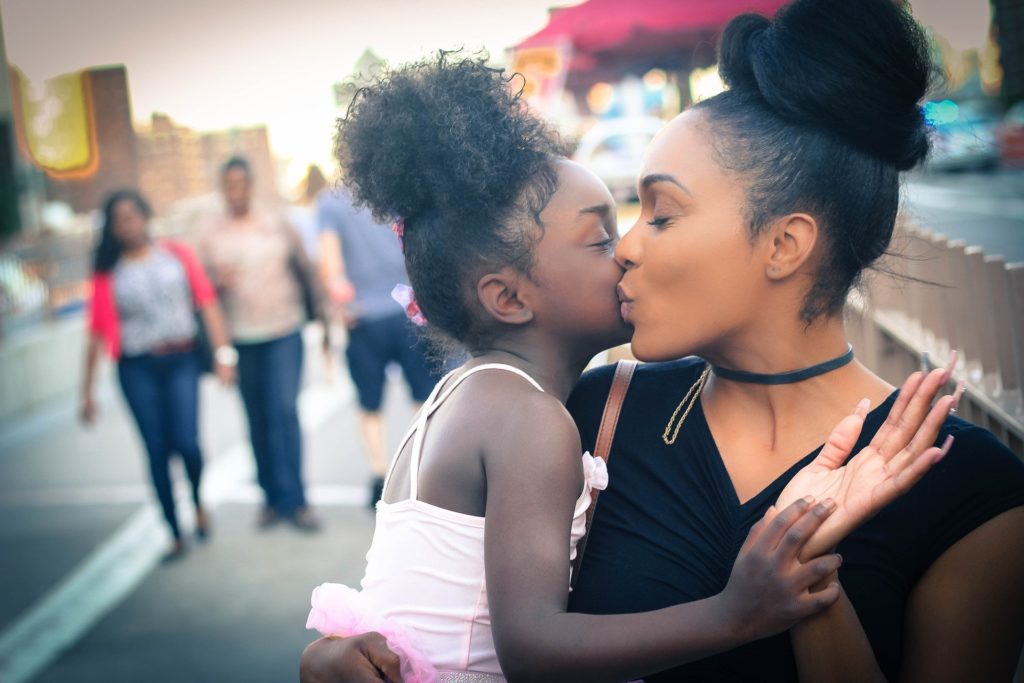The Power of Co-Regulation: Managing Tantrums with Validation and Patience
Posted by Maria Droste Counseling Center on Apr 15, 2021 in Family and Children
Para leer este blog en Español, haga clic aquí.
As difficult as they may be for parents and caregivers, tantrums are a developmentally appropriate part of childhood. Children and adolescents aren’t yet able to deal with their emotions. Then add the year-long, global pandemic fear and anxiety. It’s no wonder so many families, childcare providers, and schools are struggling right now. Let’s talk about why co-regulation is the foundation for managing tantrums.
Kids and Tantrums: What is the Message?
Whining, hitting, crying, kicking, and screaming are all common signs of a tantrum. Because children and adolescents can’t yet deal with their emotions, it makes sense that they express big feelings in the only way they know how to.

Age-appropriate expectations are important for caregivers to know and understand. Now, environment-appropriate expectations are added due to the ongoing global pandemic. “It’s important to remember to be gentle with your children, students, and yourself as we adjust to our new circumstances,” said Max Murray, affiliate psychotherapist at Maria Droste Counseling Center.
The pandemic has affected many of our reactions. Whether that’s due to fear or anxiousness, or related to the unknown and danger. We see children and adolescents coping with stress and anxiousness often. This includes when they cry, scream, fall silent, exercise their autonomy, stop engaging, and lose interest in school.
How, then, can parents, teachers, and caregivers support children and adolescents through big emotions?
Co-Regulation is the Foundation for Self-Regulation
As a parent or caregiver it is difficult to witness a tantrum. It can sometimes cause similar reactions in you when responding. However, it’s important to meet a tantrum with validation and patience through co-regulation.

Co-regulation is the foundation to developing strong self-regulation as an adult. It’s a supportive process between children and adolescents and their caregivers. Self-regulation can be difficult to teach. Yet children and adolescents learn these critical skills by watching trusted adults practice their own self-regulation.
Meeting a frustrated toddler with frustration will only compound the emotion. Instead, validate the emotion. “You wanted blueberries in the bowl, but I put raspberries in the bowl instead and that is frustrating.” Meet the tantrum with patience by waiting, listening, and speaking calmly. A full list of co-regulation strategies can be found in this Practice Brief (1), where strategies are segmented by age group. A sample is provided below.
What is Self-Regulation?
Self-regulation is a term used to describe the ability to deal with big emotions in a healthy way. It’s finding balance between frustration and relaxation, anger and calm. Self-regulation skills take practice, but can make a big difference. Using deep breathing skills can be a great way to self regulate. This slows your heart rate and decreases your stress response, no matter what is going on. This will then allow you to deal with the situation with a clear mind. Co-regulation is the foundation of self-regulation. Meaning that practicing these skills with a caregiver will promote growth in your child.
Co-Regulation by Age Group
Infants
- Provide warmth and nurturing
- Anticipate needs and respond to cues
- Provide structure and consistent routine
- Provide physical and emotional comfort when child is distressed: speak calmly and give affection
- Modify the environment to decrease demands and stress
Toddlers
In addition to above:
- Teach age-appropriate rules and expectations
- Label emotions; teach and coach use of words to express emotions
- Model waiting and self-calming strategies
- Redirect child attention to regulate behavior
Preschool-aged Children
In addition to above:
- Teach and coach simple problem-solving
- Coach rule-following and task completion
- Create incentives for positive behavior
- Model, prompt, and reinforce self-calming strategies like taking a deep breath
- Provide external structure for calming down, including a calm-down space
- Provide clear and consistent consequences, carried out in firm yet calm manner
Elementary-aged Children
- Continue to provide a warm, nurturing, supportive relationship
- Assist in problem-solving more complex academic, behavioral, and social issues
- Model conflict resolution skills
- Prompt and coach coping skills and calm-down strategies, including self-talk and relaxation
- Teach and support organization and planning skills needed for academic success
- Provide opportunities to make decisions and self-monitor behavior
- Continue to provide clear rules, structure, and consequences in a calm manner

Children need our help!
For $50, we could provide a troubled child with home-based counseling, including play therapy! Thanks for supporting your fellow Coloradans with the mental health care they need.
Adolescents
- Provide a warm, responsive relationship
- Provide support and empathy in times of intense emotion
- Model, monitor, and coach self-regulation skills across different contexts
- Monitor and limit opportunities for risk-taking behavior
- Provide opportunities to make decisions and self-monitor behavior in less risky situations
- Give time and space to calm down in times of conflict
- Prompt use of organizational and planning skills for successful task completion
- Continue clear rules, boundaries, and consequences to incentivize good choices
Young Adults
- Provide an ongoing warm, supportive relationship
- Provide comfort and empathy during times of strong emotion
- Prompt and support coping strategies
- Support long-term goal achievement by encouraging effective planning, awareness of consequences, and task completion activities
- Share perspective and provide coaching for complex problem-solving and decision-making
- Ultimately, allow space for the young adult to make his or her own decisions and experience the consequences of those decisions
Another resource is this playlist of coping skills videos. Watch together with your children so when a tantrum happens you and the child or adolescent speak using the same language from a foundation of common understanding.
If you are looking for support in creating a healthy, co-regulation practice with your children, students, or children you care for, contact Maria Droste Counseling Center.
Written by Megan Duncan
Need Help?
If you would like to speak to a therapist about this subject or about any other issue you may be experiencing, contact the Maria Droste Access Center at 303-867-4600.
Get Informative Posts like this Sent to Your Inbox
Maria Droste posts regularly on helpful mental health and wellness subjects like the one you just read. We send these out in our free monthly newsletter. Subscribe today and get informative reads like this sent straight to your inbox.
Citations:
(1) Rosanbalm, K.D., & Murray, D.W. (2017). Caregiver Co-regulation Across Development: A Practice Brief. OPRE Brief #2017-80. Washington, DC: Office of Planning, Research, and Evaluation, Administration for Children and Families, US. Department of Health and Human Services.
